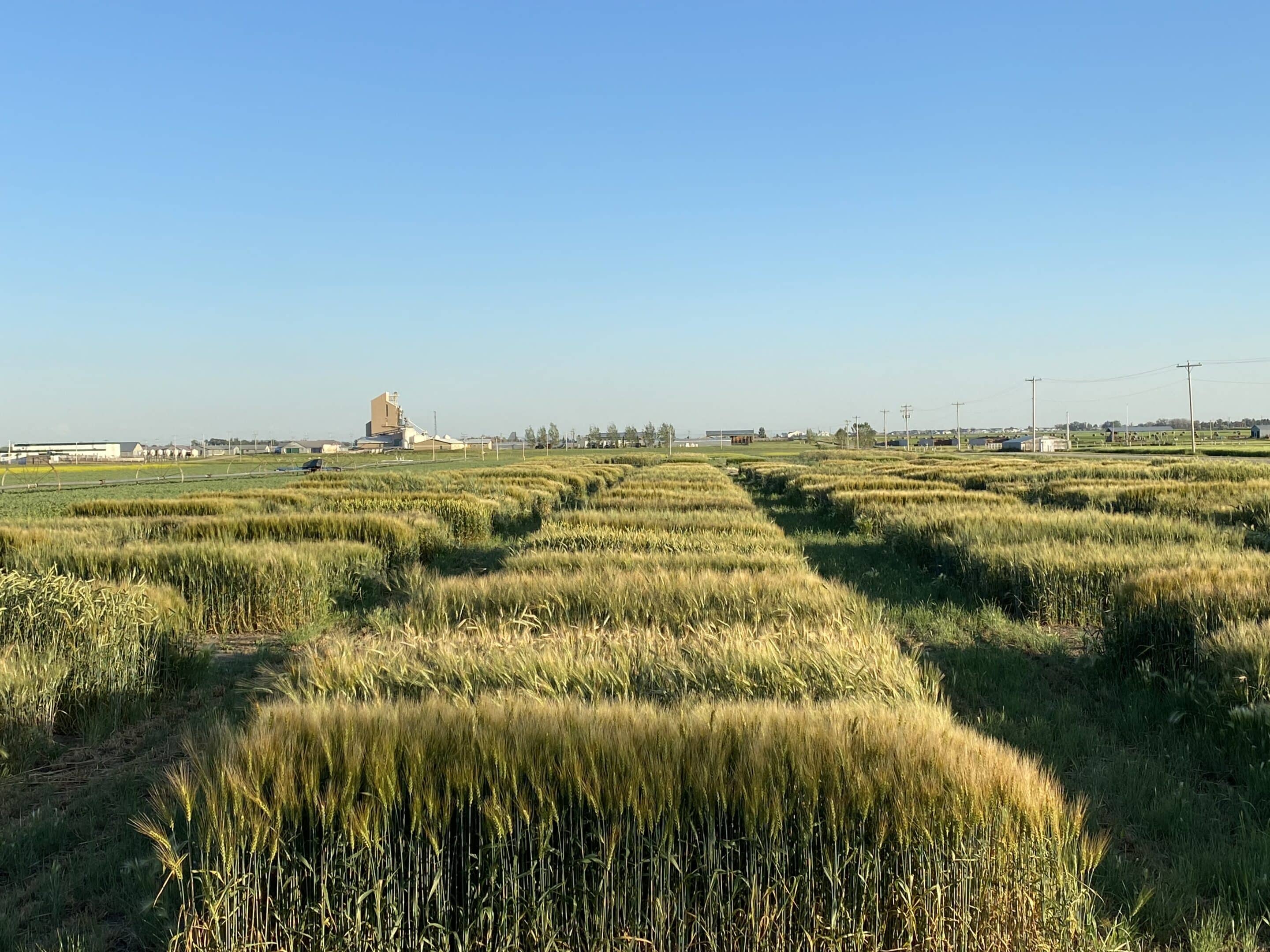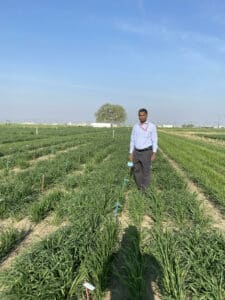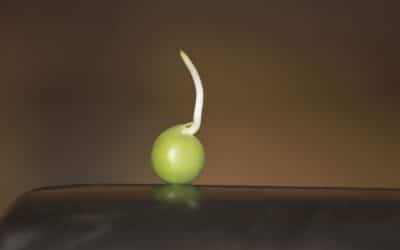Raja Ragupathy’s plant breeding work is focused on helping future generations.
When Raja Ragupathy was a boy growing up in India, he firsthand witnessed the importance of food security. The nation’s population was growing fast and feeding all those mouths was of utter importance.
Ragupathy’s father, Ragupathy Govindarasu, was a farmer who believed in the importance of education for his children — which is how Ragupathy found himself learning to value education and agriculture during his childhood. His father, a rice and pulse farmer, mainly focused on his farming endeavours, with coastal salinity of soils being the main problem wreaking havoc on his farm.
As Ragupathy continued his studies in post-secondary school, he knew there was only one thing he wanted to focus on — agriculture and in particular helping to fight against food insecurity. He received his bachelor of science in agriculture at Pandit Jawaharlal Nehru College of Agriculture and Research Institute, and then his masters in plant breeding and genetics at Tamil Nadu Agricultural.
“I excelled in studies. I got this interest to go abroad for higher studies to expand my knowledge. And at that time, I got this opportunity to continue to at the University of Manitoba for my PhD,” Ragupathy explains in a phone interview.
He found himself travelling halfway around the world to study genomics and develop field ready cultivars under the direction of Agriculture and Agri-Food Canada (AAFC) Research Scientist Sylvie Cloutier. Years later he would find himself working alongside Cloutier’s husband Gavin Humphreys, breeding the next generation of durum wheats.
In 2008, Ragupathy finished his PhD studies and then worked as a Natural Sciences and Engineering Research Council of Canada (NSERC) visiting fellow at AAFC Winnipeg. In 2015, an opportunity to work as a research associate at the University of Saskatchewan and AAFC Saskatoon presented itself. In 2017 he was promoted to a research scientist position focusing on spring durum wheat breeding at AAFC Swift Current. Two years later in 2019, he was offered a position at AAFC Lethbridge as a research scientist in crop breeding and genomics.
“I came to Canada, 15,000 kilometers away from my (home) to be a world class researcher, not only identifying a big scientific problem, but also solving it as a scientist. I hope to solve the problems not only define the problem,” he says.
The focus of Ragupathy’s work at AAFC Lethbridge is genomics research and developing field ready cultivars for fall rye, winter durum and winter triticale. He’s also working with the AAFC team on breeding a winter durum wheat variety, which will create a new class of wheat for Canadian farmers. For his genomics research he has been working on perennial cereal development — Ragupathy is following the footprint left by recently retired AAFC Lethbridge Plant Breeder Surya Acharya’s and recently departed AAFC Researcher Jamie Larsen work on this.
“The Government of Canada is involved in developing crops with climate resilience,” Ragupathy explains. “The objective of it is a perennial wheat — that means we want to perennialize annual wheat. We have to develop our prototype in the genomic background.”
For the winter durum wheat, Ragupathy is working with AAFC scientists across Canada, including Humphreys, at AAFC Ottawa. Humphreys is the eastern Canadian AAFC winter wheat breeder. When Ragupathy reached out to him to screen winter durum varieties for winter hardiness and fusarium head blight resistance, he jumped at the chance to help his wife’s former PhD student. Humphreys also hoped this would lead to opportunities for winter durum varieties for farmers in Eastern Canada.
“Climate change, I know that’s a buzzword these days, but in fact, certainly in Eastern Canada, it’s a reality that winters are not nearly as severe,” Humphreys says in a phone interview. “If we can develop winter varieties that can grow well in Western Canada as well as Eastern Canada, then we can provide producers with a mechanism to theoretically produce 25 per cent more grain.”
Humphreys adds that winter cereals are desirable as they can provide the opportunity for weed control in the fall before the ground freezes, and then protect the ground from wind erosion in the fall and winter. Winter cereals also take advantage of the spring moisture to grow and expand their roots.
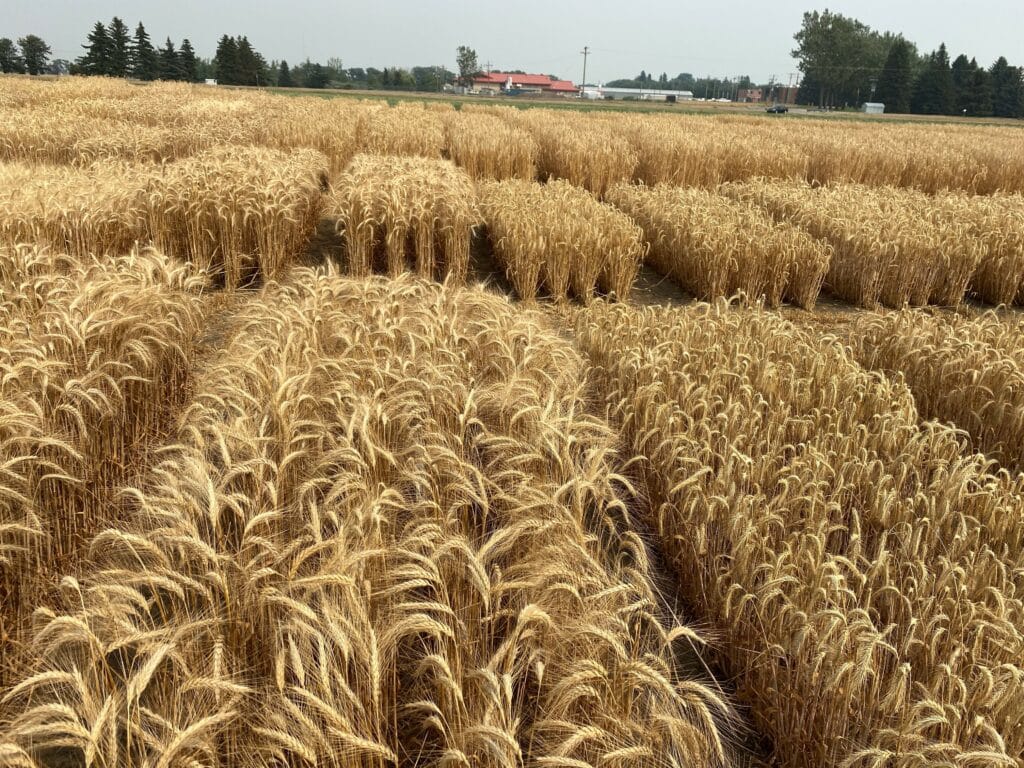
Fall rye field plots at Agriculture and Agri-Food Canada Lethbridge. Photo: Raja Ragupathy AAFC Lethbridge
As winter durum didn’t exist before in Canada, Ragupathy has developed his winter durum variety using parents initially sourced from Europe, Kansas, and Virginia by his predecessor Jamie Larsen. The challenge has been to make them able to withstand cold Canadian winters. The varieties developed are now being tested all over Canada including on the Prairies and with Humphreys in Ontario. Ragupathy hopes to have cultivars ready for research plot station trials in five years.
Not everything that Ragupathy is working on is for the distant future. At the 2023 Prairie Grain Development Commission’s annual meeting, he received an endorsement for a winter triticale cultivar. The cultivar is currently named Winter Triticale WT 0047, as it has not received an official name yet other than its test variety name.
The winter wheat cultivar is the result of collaboration with Professor Adam Lukaszewski at the University of California, Riverside. Lukaszewski developed some of the lines using Polish triticale parent plants. From there Ragupathy’s team at AAFC Lethbridge tested a few lines before finding one that provided a 114 per cent yield increase over the check triticale cultivar Metzger. It matures four days earlier and can be used for food or forage. He adds that its ergot resistance is within the same ranges as the check varieties.
“The advantage here is it has a very diverse genetic background. That is a key thing going forward in the context of climate resilience. Even if two cultivars are giving the same yield, we should go for a diverse genetic background in the sense. Producers have options, one line is susceptible to something that don’t align with the same genetic background so, if we are introducing some diversity that will be good,” he adds.
Ragupathy has several cultivars in the pipeline. He recently received two grants from the Western Grains Research Foundation, Alberta Grains, SeCan, Agricultural Development Fund with the Government of Saskatchewan, and Saskatchewan Wheat to develop field ready winter durum and fall rye cultivars.
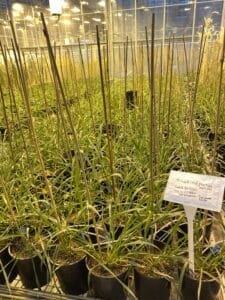
Winter triticale lines grown from microspores at Agriculture and Agri-Food Canada Lethbridge. Photo: Raja Ragupathy AAFC Lethbridge
“I’m running not only a genomics lab with the future in mind, which includes training graduate students, but also a field ready program that is delivering field ready cultivars,” he says.
For Humphreys, he views Ragupathy as a plant breeder of the future. While Humphreys uses some molecular markers and doubled haploid technology in his breeding work, Ragupathy approaches his plant breeding work from a modern molecular approach.
“(Ragupathy) will bring to breeding some new methodologies and approaches. For example, in genomic selection, you’re using molecular markers to help make your selections, and which is particularly valuable for what are called quantitatively inherited traits,” Humphreys explains. “Traits that are governed by several genes that work together, instead of one major gene like you might use to breed for resistance to rusts. By using genomic selection, you’re able to easily select for these quantitatively inherited traits, such as Fusarium head blight resistance.”
Humphreys believes it’s critical that plant breeders are trained and able to use these newer technologies to advance plant breeding. Which is why he views the new generation of plant breeders as benefitting not only Canadians but everyone around the world.
For Ragupathy, he’s thankful for the opportunities he has to work in plant breeding and the genetics space. He is “obsessed” with the science of genomics and is grateful to continue the plant breeding work of his predecessors that started on this genomic plant breeding journey.
“When you work with some great minds, you are yourself is so inspired. I can say I’m obsessed with this science, the science of genomics, not only genomics, genomics guided plant breeding,” he says.
Header photo — Winter durum field plots at Agriculture and Agri-Food Canada Lethbridge. Photo: Raja Ragupathy AAFC Lethbridge
Related Articles
Marcus Samuel is Playing with Canola Genes
Yadeta Kabeta is Breeding Barley in the Heart of Cattle Country


